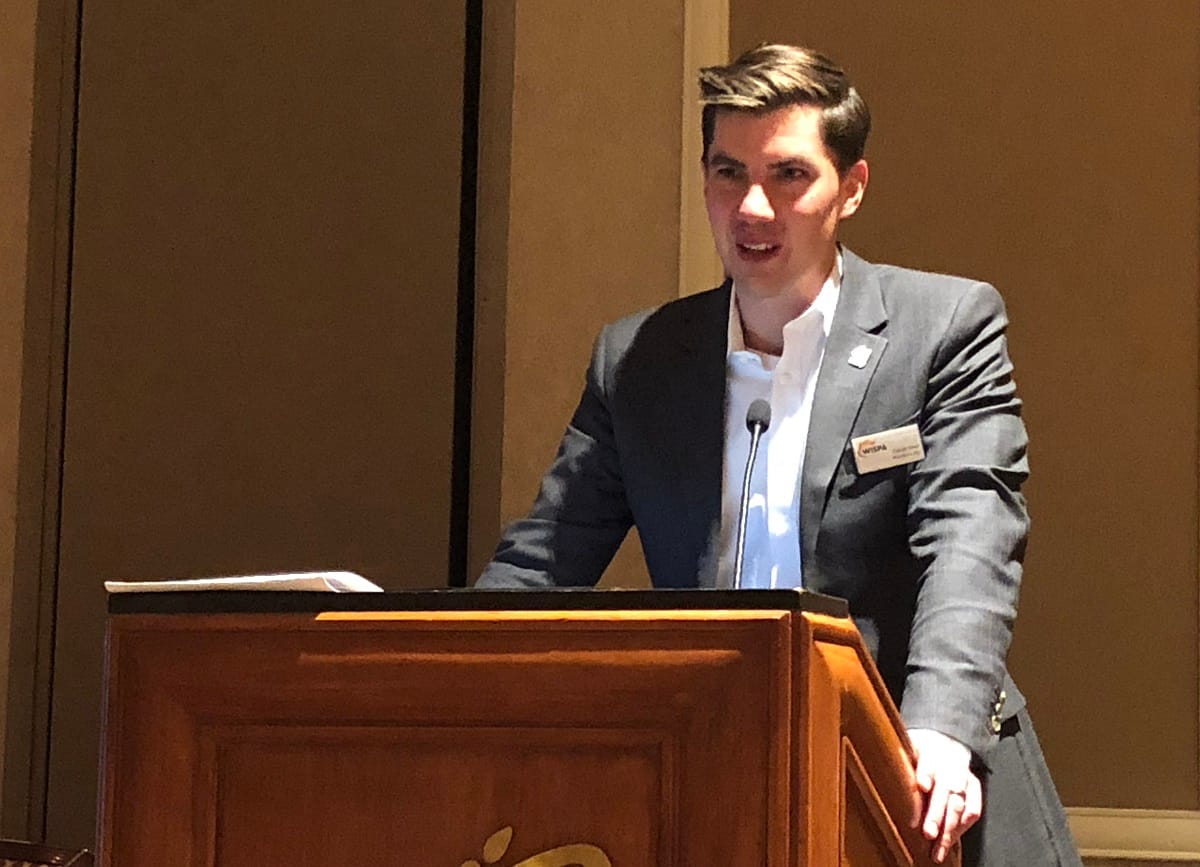FCC Proposes 100 Megahertz Mid-Band Spectrum, NTCA on 800 Numbers, WISPA’s 10 Takeaways from Auction
FCC Chairman Ajit Pai shared his plan Tuesday (PDF) to make the 3.45-3.55 GigaHertz (GHz) band available for commercial use in the United States, setting aside 100 megahertz for commercial 5G use. “With this 3.45 GHz band proposal, the upcoming C-band auction of 280 megahertz of spectrum, and the re
Liana Sowa

FCC Chairman Ajit Pai shared his plan Tuesday (PDF) to make the 3.45-3.55 GigaHertz (GHz) band available for commercial use in the United States, setting aside 100 megahertz for commercial 5G use.
“With this 3.45 GHz band proposal, the upcoming C-band auction of 280 megahertz of spectrum, and the recently completed auction for Priority Access Licenses in the 3.5 GHz band, the Commission is on track to make a wide swath of 530 megahertz of continuous mid-band spectrum available for 5G,” said Pai, who heads the Federal Communications Commission.
This plan would also work to fulfill congress’s MOBILE NOW Act, which calls for the agency to “make new spectrum available for flexible use,” and work with the Commerce Department’s National Telecommunications and Information Administration to determine the feasibility of this band’s commercial use.
The law also calls for new rules “to enable commercial use and coordination between federal and non-federal users.”
The White House and Defense Department on August 10 announced operations in the band could make space for commercial 5G operations.
NTCA discusses intercarrier compensation for 800 numbers
The rural broadband association NTCA raised concerns to the FCC (PDF) about the intercarrier compensation rates associated with 800 numbers.
The association is concerned about additional costs on rural local exchange carriers.
NTCA therefore urged the FCC “to make explicit in any upcoming order with respect to 8YY traffic that, in the absence of mutual agreement, no party may force a change to any RLEC’s existing interconnection points that define financial responsibility for interconnection and transport of calls pursuant to any tariff, contract, or other arrangement even if the intercarrier compensation rates applicable under such vehicles may be altered by a Commission order.”
If the FCC did decide to make changes to interconnection responsibilities, reductions in access revenues would follow.
WISPA’s 10 takeaways from CBRS auction
The Wireless Internet Service Providers Association touted its members success in winning more than 3600 license bids in the Federal Communication Commission’s Auction 105, the Citizens Broadband Radio Service. Claude Aiken, CEO of WISPA, detailed his 10 lessons learned for fixed wireless broadband providers and their communities:
- Size matters. WISPA’s success challenges the idea that the most efficient way to auction-off limited spectrum is through large geographic license areas.
- Competition matters. Everyone benefits from competition in spectrum licenses. The US Treasury makes more money and the diversity of applicants result in innovation. “The FCC should work to include licenses that can better accommodate small innovators in all its future auctions.”
- Consumers win. More useable spectrum equals more consumer benefits.
- The auction solidifies the “wireless play” as a model for broadband deployment. To successfully connect Americans with broadband infrastructure, all the resources in the broadband sector need to be used.
- The CBRS model of spectrum sharing – with some form of SAS or AFC – is not going away. The strength of the bids give confirm that the system works. “With little or no ‘greenfield,’ mid-band spectrum available, the CBRS auction model proves new spectrum can be ‘found’ and then better utilized via a more diverse range of actors than previously allowed.”
- Rural areas win. 91% of all licenses sold were in rural areas, showing the significant interest and investment in rural America. Almost 70 members of WISPA won bids for over 3600 licenses in over than 1350 counties, which represented over 17% of all the licenses won. Considering the fixed wireless industry’s reliance on Part 15 unlicensed spectrum to serve its customers, the $100.4 million they spent in Auction 105 was unprecedented.
- The spectrum for which WISPs placed winning bids will be rapidly used to serve rural communities in the digital divide. This will improve current services by combining with access to 80 MHz of GAA spectrum and working to open new high-speed services for areas that did not have them before.
- WISPs are maturing, evolving, and growing through reduced regulation, better access to capital, and aggressive market entry. In areas with good infrastructure available like CBRS spectrum, WISPs have taken advantage of opportunities to serve areas that legacy providers rate “too unprofitable to their bottom line.”
- WISPs (and their communities) are not waiting for Big Mobile to deploy 5G. They’re growing broadband where it’s wanted and needed right now. CBRS and good fixed wireless spectrum in general that growth. It would benefit Policymakers to identify and free-up spectrum for those who are working to bridge the digital divide.
- The $4.5 billion investment in the 70 MHz of the licensed portion of the CBRS band will aid growth of the GAA spectrum, which will invite the ecosystem to craft solutions to make the entire 150 MHz of the CBRS band useable for licensed and license-by-rule players. “This success should encourage the FCC to allocate the neighboring 3.45 – 3.55 GHz with a similar sharing model and auction process.”










Member discussion